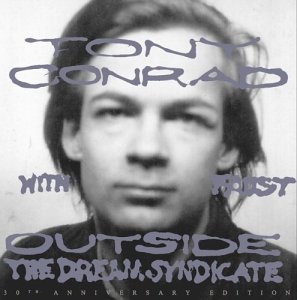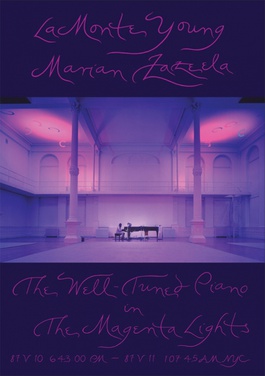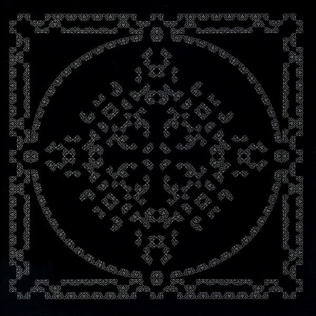
Terrence Mitchell "Terry" Riley is an American composer and performing musician best known as a pioneer of the minimalist school of composition. Influenced by jazz and Indian classical music, his music became notable for its innovative use of repetition, tape music techniques, and delay systems. His best known works are the 1964 composition In C and the 1969 LP A Rainbow in Curved Air, both considered landmarks of minimalism and important influences on experimental music, rock, and contemporary electronic music.

La Monte Thornton Young is an American composer, musician, and performance artist recognized as one of the first American minimalist composers and a central figure in Fluxus and post-war avant-garde music. He is best known for his exploration of sustained tones, beginning with his 1958 composition Trio for Strings. His compositions have called into question the nature and definition of music, most prominently in the text scores of his Compositions 1960. While few of his recordings remain in print, his work has inspired prominent musicians across various genres, including avant-garde, rock, and ambient music.

Metal Machine Music is the fifth studio album by American rock musician Lou Reed. It was recorded on a three-speed Uher machine and was mastered/engineered by Bob Ludwig. It was released as a double album in July 1975 by RCA Records, but taken off the market three weeks later. A radical departure from the rest of his catalog, the Metal Machine Music album features no songs or recognizably structured compositions, eschewing melody and rhythm for modulated feedback and noise music guitar effects, mixed at varying speeds by Reed. Also in 1975, RCA released a Quadrophonic version of the Metal Machine Music recording that was produced by playing it back both forward and backward, and by flipping the tape over.

Anthony Schmalz Conrad was an American video artist, experimental filmmaker, musician, composer, sound artist, teacher, and writer. Active in a variety of media since the early 1960s, he was a pioneer of both drone music and structural film. As a musician, he was an important figure in the New York minimalist scene of the early 1960s, during which time he performed as part of the Theatre of Eternal Music. He became recognized as a filmmaker for his 1966 film The Flicker. He performed and collaborated with a wide range of artists over the course of his career.

The Dream Syndicate is an American alternative rock band from Los Angeles, California, originally active from 1981 to 1989, and reunited since 2012. The band is associated with neo-psychedelia and the Paisley Underground music movement; of the bands in that movement, according to the Los Angeles Times, the Dream Syndicate "rocked with the highest degree of unbridled passion and conviction." Though never commercially successful, the band met with considerable acclaim, especially for its songwriting and guitar playing. Bandleader Steve Wynn reformed the band in 2012, and a fifth studio album was released in February 2017.

Angus William MacLise was an American percussionist, composer, poet, occultist and calligrapher, known as the first drummer for the Velvet Underground who abruptly quit due to disagreements with the band playing their first paid show.
Drone music, drone-based music, or simply drone, is a minimalist genre that emphasizes the use of sustained sounds, notes, or tone clusters – called drones. It is typically characterized by lengthy audio programs with relatively slight harmonic variations throughout each piece. La Monte Young, one of its 1960s originators, defined it in 2000 as "the sustained tone branch of minimalism". Elements of drone music have been incorporated in diverse genres such as rock, ambient, and techno.
Table of the Elements an American avant-garde record label created and owned by Jeff Hunt. Begun in 1993, the label’s 150-plus releases form a significant contemporary chronicle of American experimental music.
Marian Zazeela is an American light artist, designer, calligrapher, painter and musician based in New York City. She was a member of the 1960s experimental music collective Theatre of Eternal Music, and is known for her collaborative work with her husband, the minimalist composer La Monte Young.

Outside the Dream Syndicate is a 1973 album by United States avant-garde composer Tony Conrad in collaboration with German krautrock group Faust. The album marks Conrad's first and only musical release for many years, and remains his best known musical work. It is considered a classic of minimalist and drone music. Pitchfork exclaims "for a moment in Outside the Dream Syndicate, one forgets what exactly is moving and what is standing still."

New York in the 1960s: Sun Blindness Music, better known as Sun Blindness Music, is an album by John Cale released in 2001. It is the first of a loose anthology of experimental albums recorded during Cale's tenure with the Theatre of Eternal Music during the mid-1960s.

John Cale: Inside the Dream Syndicate Volume 2, Dream Interpretation, a.k.a. simply Dream Interpretation, is an album by John Cale from his tenure with the Theatre of Eternal Music. It is the second in a loose anthology of minimalist pieces, once thought lost, compiled from the tape collection of fellow minimalist Tony Conrad. The album follows Cale's debut collection Sun Blindness Music and the collaborative bootleg Day of Niagara. Dream Interpretation was in turn followed by Stainless Gamelan.

John Cale: Inside the Dream Syndicate Volume 3, Stainless Gamelan or simply Stainless Gamelan is an album by John Cale, better known for his work as the violist and founding member of the Velvet Underground.

The Velvet Underground was an American rock band formed in New York City in 1964. It originally comprised singer and guitarist Lou Reed, multi-instrumentalist John Cale, guitarist Sterling Morrison, and drummer Angus MacLise. MacLise was replaced by Moe Tucker in 1965, who played on most of the band's recordings. Though their integration of rock and the avant-garde achieved little commercial success, they became one of the most influential bands in rock, underground, experimental, and alternative music. Their provocative subject matter, musical experiments, and nihilistic attitude was also influential in the development of punk rock and new wave music.
The Theatre of Eternal Music was an avant-garde musical group formed by La Monte Young in New York City in 1962 to perform his dream chord music. The first group (1962-1964) of performers consisted of La Monte Young, Marian Zazeela, Angus MacLise, and Billy Name. From 1964 to 1966 Theatre of Eternal Music was composed of La Monte Young, Marian Zazeela, John Cale (viola), and Tony Conrad (violin), with sometimes also Terry Riley (voice). Since 1966, Theatre of Eternal Music has seen many permutations and has included Garrett List, Jon Gibson, Jon Hassell, Rhys Chatham, Alex Dea, Terry Jennings, and many others, including some members of the various 1960s groups. Theatre of Eternal Music's self-described dream chord "dream music" explored Young's drones and pure harmonic intervals.

The Well-Tuned Piano is an ongoing, improvisatory, solo piano work by composer La Monte Young. Begun in 1964, Young has never considered the composition or performance "finished", and he has performed incarnations of it several times since its debut in 1974. The composition utilizes a piano tuned in just intonation.

Dream House is a sound and light installation, and occasional performance venue, created by minimalist composer La Monte Young and multimedia artist Marian Zazeela. The installation features Young's continuous sine wave drones and Zazeela's lighting and design.

31 VII 69 10:26 - 10:49 PM / 23 VIII 64 2:50:45 - 3:11 AM The Volga Delta is an album by American musicians La Monte Young and Marian Zazeela, released in 1969 on Heiner Friedrich's Edition X label as a limited edition 12-inch vinyl.

Trio for Strings is a 1958 composition for violin, viola, and cello by American composer La Monte Young. It consists almost entirely of sustained tones and rests, and represents Young's first full embrace of "static" composition. It has been described as a central work of musical minimalism.















